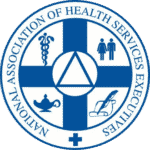We go over the insights from industry experts on the trends and challenges in community healthcare staffing, including the need for a diverse and skilled workforce, workforce shortages, and the continued impact of COVID-19 on healthcare staffing. It also highlights potential solutions and best practices to address these challenges.
The healthcare staffing shortage remains in crisis as we enter the second quarter of 2023. The aging Baby Boomer population, post-COVID burnout, and our lack of nursing faculty all led to a perfect storm for healthcare staffing. At the same time, technology continues to advance, changing community healthcare organizations in new ways. This blog looks at some of the challenges and trends affecting community healthcare organizations and the FQHC staffing community. What’s next, and how can we address these challenges?
Latest FQHC Trends
One of the key trends in community healthcare staffing is the growing demand for community healthcare services. The aging population and the prevalence of chronic diseases led to an increase in the number of patients care. To meet this demand, more community care workers must be hired. However, the supply of qualified home care providers has not kept up with the demand. The government recently announced more than $27 million available to address workforce shortages in medically underserved areas, including staffing shortfalls that leave FQHCs struggling to keep up with demand.
New technologies are also impacting this trend. For example, IoT (Internet of Things) devices are remote patient sensors that can record vital statistics and transmit that data to the FQHC. These devices lessen our need for in-home care while increasing patient compliance with doctor’s orders. Telehealth technologies, which use video conferencing to connect healthcare providers and patients on any digital screen, can also help with patient education, medical triage, and even treatment of patients who cannot (for whatever reason) make it into a community healthcare facility. Two limitations to these technologies include communities that lack robust broadband connectivity and a dearth of qualified human resources who can operate these tools.
A related challenge is the need for healthcare providers to develop and implement effective training programs for community healthcare staff. Staff in non-clinical settings require specialized training and knowledge to provide quality care.
At the same time, community healthcare organizations must continue to put their best foot forward to improve staff engagement and retention. Effective FQHC leadership understands the importance of open dialogue with current employees. Understanding the needs, wants, and priorities of your staff related to their preferences for schedules, benefits, and pay is an important retention step at a time when 57% of the healthcare workforcesays their organization isn’t investing in them.
- 43% of healthcare employees say they aren’t being asked to provide feedback.
- 74% say they struggle to keep up with living expenses and could use a raise.
- 53% say their workloads have increased.
While these numbers looked at the entire healthcare field, it makes sense to extrapolate this data for the community healthcare market. Employees want to know they’re valued and also have a vested interest in contributing to the mission of your organization. To counteract these trends, community healthcare staffing must seek to forge bonds with recruits as they enter your organization and then maintain those ties throughout their tenure.
There is help looming from the federal government, as the Dr. Lorna Breen Health Care Provider Protection Act earmarks $25 million to aid the development of a culture of wellness in rural health clinics and community health centers.
Solving FQHC Staffing Challenges
UHC Solutions is your staffing problem solver. We work with FQHC organizations to help them meet their hiring goals by extending their recruitment capabilities. If you’re searching for technology-savvy, well-trained, experienced administrative and clinical staff, our organization is here to help. Contact us today.




